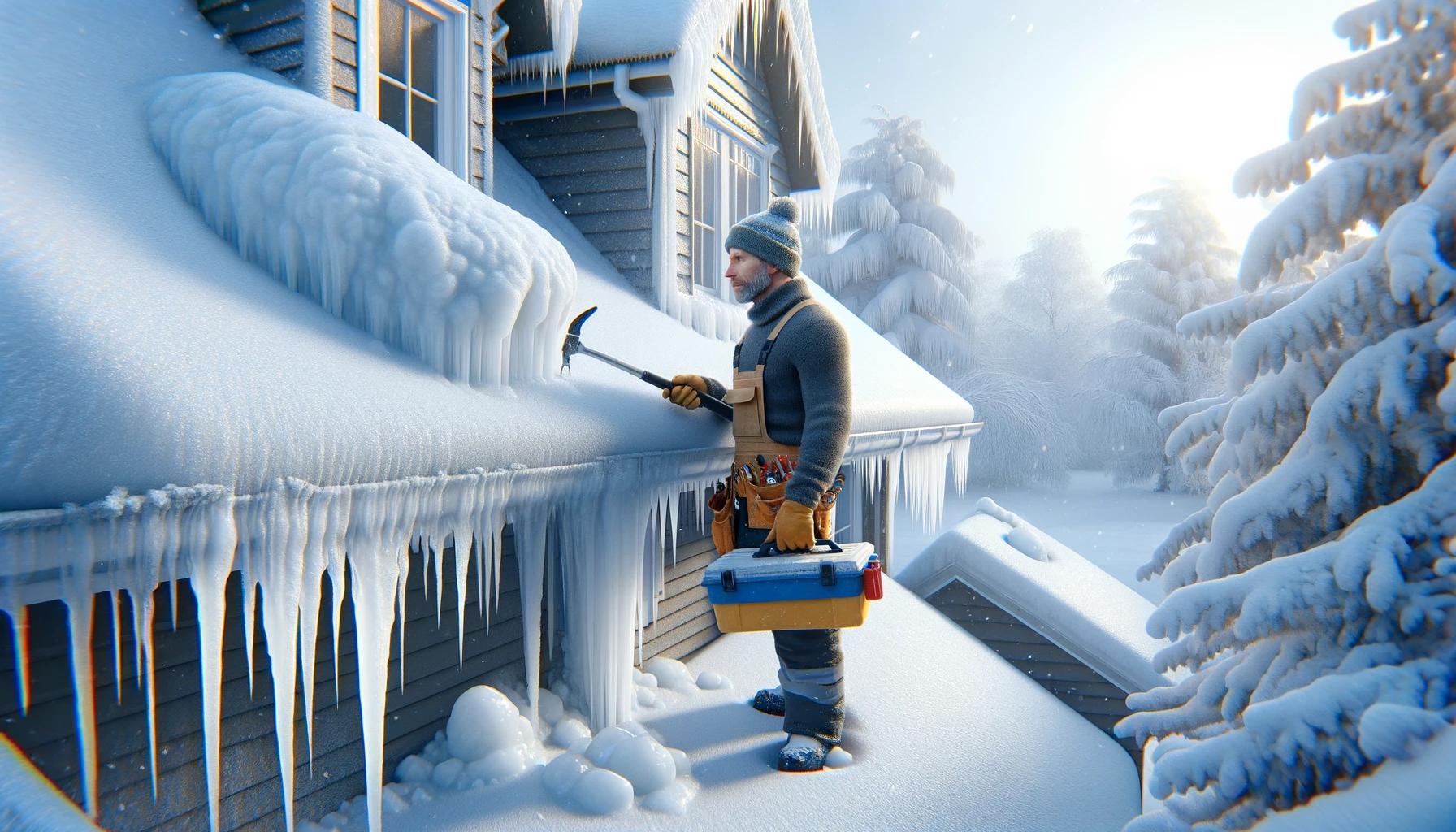As winter covers our surroundings with layers of snow, it creates a beautiful scenery that’s befitting of the festive season. However, this beautiful scenery often comes with a less appealing disadvantage of the accumulation of snow and ice on our rooftops.
The weight and potential damage caused by these frozen elements can pose a serious threat to our homes. In situations like this, knowing when to pick up the phone and summon the expertise of a roofer becomes crucial in safeguarding our abodes.
In this article, we’ll unravel the mysteries behind recognizing the signs that demand a roofer’s attention. These tips will help you ensure that your winter scenery doesn’t transform into a roofing nightmare.
The Slope of Your Roof
Before you consider “when to call a roofer,” you have to ask yourself, “what’s the pitch of my roof?”
When deciding whether it’s time to address that blanket of snow on your roof, the key question to ask is, “What’s the pitch of my roof?” The slope of your roof plays a crucial role in determining its susceptibility to snow-related issues.
Unlike flat roofs, which are more prone to collapse due to their inability to disperse weight effectively, sloped roofs offer a natural advantage. The key thing here is that the steeper your roof angle is, the better it can handle snow load.
For instance, a roof with a 10/12 or 12/12 pitch can manage more snow compared to a flat roof. Moreover, the design of sloped roofs discourages snow accumulation in the first place.
The snow tends to slide off or, if stubborn, gets blown away by the wind. This doesn’t mean your pitched roof is immune to snow – it will get its fair share. However, it’s the flat or extremely shallow-pitched roofs that often bear the brunt of snow buildup.
If your roof has a steep pitch, you might have some leeway before rushing to remove the snow. Steeply pitched roofs can often handle a substantial snow load, even several feet, unless there are significant design flaws or you’re dealing with an older house.
In such cases, you should promptly call a roofer to help clear out the snow. On the other hand, if your roof is a flat one, don’t hesitate to call a roofer immediately.
Watch Out for Ice Dams
Ice dam formations occur when snow on your roof melts, only to refreeze before it smoothly exits through the gutters. The result of this is often a frozen “dam” that obstructs proper drainage.
In such a case, melted ice and snow creep beneath your roof’s shingles. This unwanted infiltration can lead to mold growth and water damage within the roof deck.
It’s a sneaky process that, if left unattended, can wreak havoc on your home. So, when you spot these icy barricades forming, it’s a clear signal to call in a roofer before the situation worsens.
The Density of the Snow
One critical factor in determining when to call a roofer is the density of the snow on your roof. Ask yourself if it’s light, fluffy powder or the dense, heavy kind that can weigh ten times or more.
If what you have on your roof is the wet, hefty snow, it’s wise to take a proactive approach when you reach the 1-1.5 feet mark, even if your roof is a pitched structured type. Why? This is because any failure to address that added weight, can lead to unwelcome surprises.
Imagine waking up to a fresh layer of snow overnight, only to find out your roof couldn’t bear the load. Being cautious at the 1-1.5 feet threshold is a small effort that could prevent major headaches.
Consider If There Are Snow Drifts
Another key consideration in deciding when to reach out to a roofer is by assessing if there are snow drifts on your roof. When we’re talking about two feet of snow covering on the roof, the visual representation is not always a uniform layer.
Your roof might play host to three- or four-foot snow drifts, particularly where it meets an exterior wall, beside a dormer, or in valleys formed by intersecting sloped roofs. While these kind of spots are naturally built to endure additional stress, it is not a good thing for your roof.
This makes it advisable to clear the snow sooner rather than later. Keep an eye on these vulnerable areas. You should address any kind of snow drift as quickly as possible.
It can spare your roof from unnecessary strain and potential damage. So when you notice any form of snow drift, call your roofer immediately.
Conclusion
Entrusting the task of roof snow removal to professionals is not just a matter of convenience but a safeguard against potential costly errors that DIY attempts may incur. At TheRoofPro, we understand the intricacies of roof care.
As long as it’s a roofing issue, you can rely on us to safely navigate your roof and address the issues with precision. Contact us today for expert care that goes beyond the ordinary.


